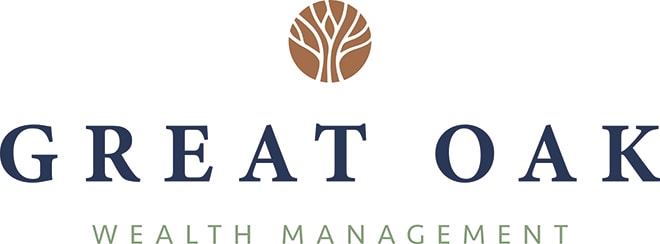The cash balance plan is an effective but often overlooked tool to ramp up retirement savings and reduce taxes for self-employed professionals. This employer-sponsored plan guarantees a specific account balance based on service and salary at retirement. The cash balance plan has unique features that make it a compelling retirement saving addition to the 401k.
An employee can choose between a lump-sum distribution or an annuity. If they choose the annuity, they’ll receive monthly payments from the plan. In the case of the lump sum, the employee can roll the balance into an IRA or other retirement plan.
Two Retirement Plan Categories
Retirement plans can be divided into defined benefit or defined contribution plans.
Defined Contribution
Your 401k or 403b is a defined contribution plan. You make contributions and possibly receive an employer-matching amount. There is no guaranteed benefit. The amount you will have in retirement depends entirely on how much you put into the account and the performance of your investments. You assume the risk.
Defined Benefit
The best example of a defined benefit plan is the company pension. After you retire, your employer pays you a defined benefit for the rest of your life. The company contributes less to the plan if the investments do well or more if they perform poorly. The company takes all the investment risks while you receive the benefits.
Cash Balance Plans Are a Hybrid
A cash balance plan is part defined benefit plan where the employer contributes to an account on behalf of the employee. An employee is guaranteed those contributions, called pay credits, plus an interest credit at either a fixed or variable rate. In addition, the cash balance plan incorporates features of a defined contribution plan in three ways:
- The employer invests the contributions.
- Depending on your plan’s design, you may alter your yearly contributions.
- Upon separation, i.e., retirement or resignation, or when the plan is closed, you can transfer the money tax-free into your 401(k) or IRA.
Think of the cash balance plan as an additional retirement plan. It allows extra tax-deferred retirement contributions above and beyond your 401(k).
Cash Balance Plan Pay Credits
Let’s cut to the chase. You’re reading this because you want to know how much extra you can sock away. It’s not a simple answer and depends on your income, age, and how much is currently in the plan.
The employer contributes a percentage of your salary or a flat sum each year. This is called a pay credit. A cash balance plan provides a minimum contribution of between 5% and 7.5% of an employee’s pay.
For example, if employees are promised a pay credit of 7.5% of their salary in the company cash balance plan, an employee earning $200,000 would receive a pay credit of $15,000.
Cash Balance Plan Interest Credits
In addition to the pay credits, employees receive an interest credit. There are several interest credit rate options to choose from. We’ll use the most basic, the fixed-rate interest credit, to keep things simple.
All contributions are pooled and invested. The plan trustee manages the investments and hypothetical individual accounts of each employee. These accounts are monitored and credited with the appropriate interest credit each year, depending, of course, on the performance of the investments.
The average fixed-rate credit is approximately 5%. If the investments grow, that credited interest rate may be higher, up to a limit of 7%. The additional earnings above the 7% limit are allocated to a reserve account if the investments perform exceptionally well. The reserve account compensates for future shortfalls in investment performance or reduces future required contributions.
Speaking of shortfalls. If the investments perform poorly, participants do not receive interest payments. Funds will be moved from the reserve account during negative years to offset the shortfall. In severe economic downturns, the company may deplete its reserve account and be required to contribute additional funds to make up some of the losses. This may require a significant contribution from the employer.
As long as you have a strong cash flow, which you should if you even want to consider a cash balance plan, this could turn into a hidden benefit. Contributing additional when investments are down, i.e., buying low, helps with the overall performance in the long run. Don’t forget these contributions are tax-deductible.
Cash Balance Limits
The maximum amount you can accumulate in the cash balance plan is a lump sum balance of $3.5 Million (2024). If you choose the annuitized benefit, it cannot exceed your top three years of consecutive compensation or $275,000 (2024), whichever is lower. The older you are and the less you have in the plan, the more you can contribute.
How Are Cash Balance Pension Plans Regulated?
Like all employer-sponsored retirement plans, cash balance plans are regulated by the Employee Retirement Income Security Act (ERISA). The plan is legally obligated to act in the participants’ best interests and meets participation, vesting, benefit accrual, and funding requirements.
Funds in pension plans, including cash balance plans, are guaranteed by the Pension Benefit Guaranty Corporation (PBGC). This ensures those plan participants will continue to receive their promised benefits even if the cash balance plan is terminated or the company goes out of business.
Who are the best candidates?
For the small business owner/self-employed entrepreneur, if you’re not maxing out your 401k, you won’t benefit from a cash balance plan. Secondly, the higher your income, the more significant the benefit. Realistically, it is ineffective if you earn less than $350K-ish per year. Finally, few or no employees are a must. Suppose you’re required to make significant contributions for employees. In that case, this is an additional expense, eliminating the personal benefit to you, the owner. Self-employed, independent contractors and partnerships with few employees will benefit the most.
Incorporating a 401(k) and a cash balance plan provides the biggest tax bang for your buck. Another benefit of both is asset protection! These accounts are generally fully protected from creditors, both yours and the company’s. The flexibility available through the plans is also a considerable advantage. Partners can even make different contributions or be limited to certain professionals/employees.
There are many options for how the Cash balance plan works, and it is not a do-it-yourself project. An outside company/actuary is required to determine the contributions of each employee. Therefore, the expenses for cash balance plans are higher than for a 401K plan.
Cash Balance Plan Bottom Line
A cash balance plan is an excellent option for those self-employed professionals already maxing out their 401(k)s. It combines the best parts of a pension and 401k: a guaranteed benefit and the ability to invest the contributions. Self-employed professionals interested in boosting retirement savings and minimizing taxes should strongly consider adding a cash balance plan.
If you’re a self-employed professional and want to determine if a cash balance plan is right for you and your business, click here to set up a free initial consultation.








